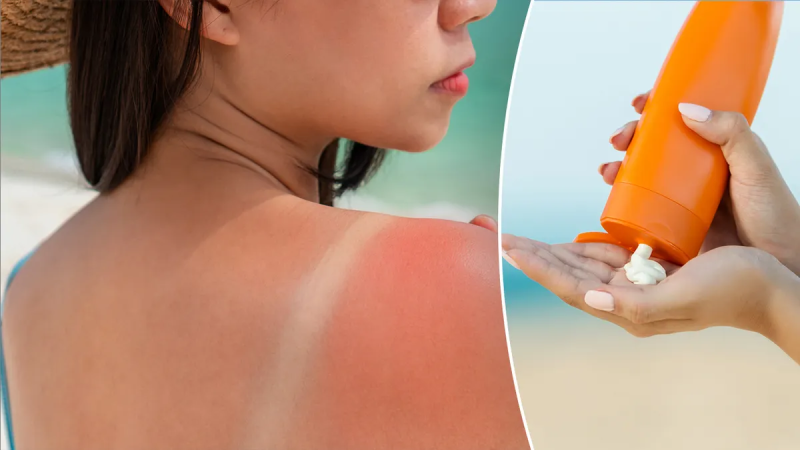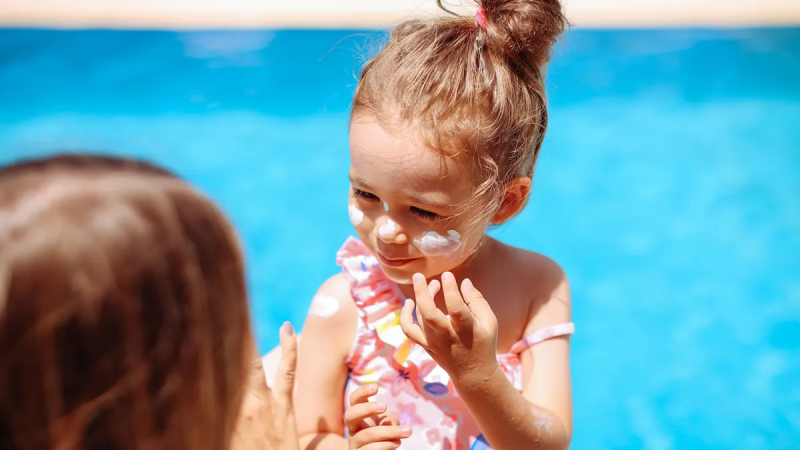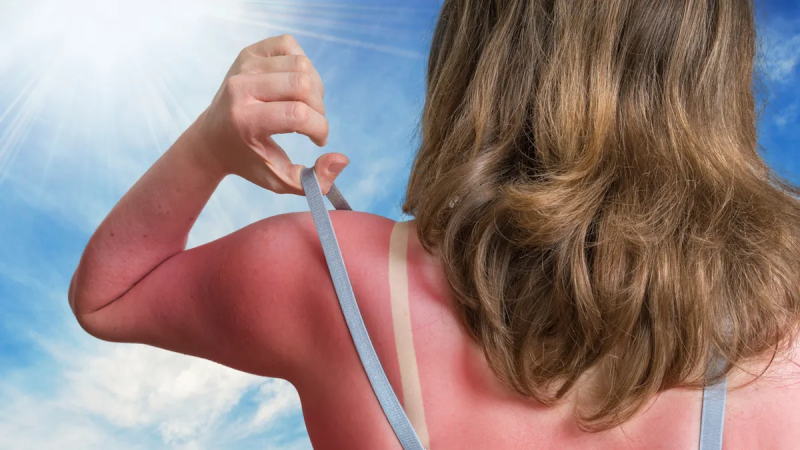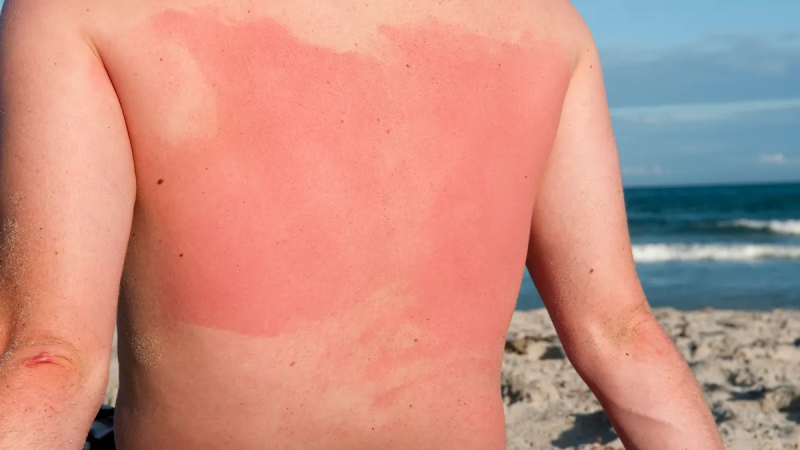Tips for protecting your skin from painful sunburn and remedies for when you do spend too much time in the sun
Sunburn can be hard to avoid.
In the summer, when you're spending lots of time in the sun, it's vital to use sunscreen to keep your skin as protected as possible.
There are many different precautionary measures you can take to protect your skin.
WEAR SUNSCREEN THE RIGHT WAY THIS SUMMER BY UNDERSTANDING SPF AND THE PROPER APPLICATION PROCESS
Here's everything you need to know for healthy skin this summer.
- What exactly is sunburn?
- I've already got sunburn. What should I do?
- What about tans? Are those considered sun damage?
- What are the symptoms of sunburn?
- How does the body try to fight against sun damage?
- Is there anything people can do to reverse sun damage once it’s been done?
- What can I do to lower my risk of sun damage?
1. What exactly is sunburn?
Sunburn, also called erythema, according to the Food and Drug Administration (FDA), is the body's response to overexposure to ultraviolet (UV) light.

Sunburn can be painful. One of the best preventative measures you can take is to apply sunscreen properly when spending time outside. (iStock)
Exposure to the sun's UV radiation has been associated with approximately 90% of nonmelanoma types of skin cancer, the Skin Cancer Foundation says.
The sun also causes most melanomas.
One in five Americans will develop skin cancer over a lifetime, according to the foundation.
2. I've already got sunburn. What should I do?
Sometimes sunburn is hard to avoid.
WHAT SPF SHOULD YOUR SUNSCREEN HAVE? FIND OUT HOW IT MAY HELP PREMATURE AGING AND SKIN CANCER
If you miss a hard-to-reach spot on your body or lose track of time and forget to reapply, you can find yourself with a painful sunburn.
If you do get sunburn, you can try taking cool baths or showers, moisturizing with products featuring aloe vera and soy and taking pain medication like aspirin, the American Academy of Dermatology (AAD) says. Also, make sure to drink plenty of water to prevent dehydration.

Even if you do apply sunscreen, you could still wind up with sunburn if you are outside for a long period of time. If you do, both a cold bath and aloe vera can help soothe the pain. (iStock)
If you have blisters, do not pop them.
3. What about tans? Are those considered sun damage?
Tans are technically considered sun damage.
"There is no such thing as a safe tan," the FDA warns, explaining on its website that a tan is a sign of skin damage.
CLICK HERE TO SIGN UP FOR OUR LIFESTYLE NEWSLETTER
That’s why it is so important to wear sunscreen with at least SPF 30 to protect your skin.
4. What are the symptoms of sunburn?
The main symptom of sunburn is redness of the skin.
When you have sunburn, the part of the body where it is located is often tender, painful and warm to the touch.

Sunburn is often red, can blister and is warm to the touch. (iStock)
If you have a darker skin tone, you may not notice sunburn right away, according to the FDA, and it can take many hours for physical signs of a burn to appear on the skin.
For more Lifestyle articles, visit www.foxnews.com/lifestyle
5. How does the body try to fight against sun damage?
The body increases the production of melanin, which is pigment that determines the color of hair and skin, according to the AAD.
In general, sunburns happen to people with less melanin, while those with more of it may tan, the group explains.
With sunburn, skin cells are damaged by UV rays, and the body sends blood to where it has been hurt. So, it causes skin to appear red and feel hot, the FDA says.
The itchiness and peeling associated with sunburn is a result of white cells getting rid of the cells that have been damaged, according to the agency.

To lower your risk of getting sunburn, apply sunscreen with an SPF of at least 30 in regular increments and wear protective clothing while out in the sun. (iStock)
6. Is there anything people can do to reverse sun damage once it’s been done?
"The truth is, the skin has a long memory," dermatologist Dr. Lisa Chipps says on the Skin Cancer Foundation website, noting that sun damage is "more or less permanently recorded in it."
She suggests using a topical retinoid like tretinoin and trying laser treatments.
People can also try methods like microdermabrasion, chemical peels and topical antioxidants.
7. What can I do to lower my risk of sun damage?
To lower your risk of sun damage, wear sunglasses and broad-brimmed hats while outside, use a broad-spectrum sunblock with an SPF of at least 30 and avoid the sun from 10 a.m. to 4 p.m., the American Cancer Society advises.
CLICK HERE TO GET THE FOX NEWS APP
Keep track of when you are applying sunscreen and be sure to reapply every couple of hours.
If you're starting to feel your skin getting warm and burned, try to seek shade when possible to avoid spending long periods of time in the sun.
Disclaimer: The copyright of this article belongs to the original author. Reposting this article is solely for the purpose of information dissemination and does not constitute any investment advice. If there is any infringement, please contact us immediately. We will make corrections or deletions as necessary. Thank you.







